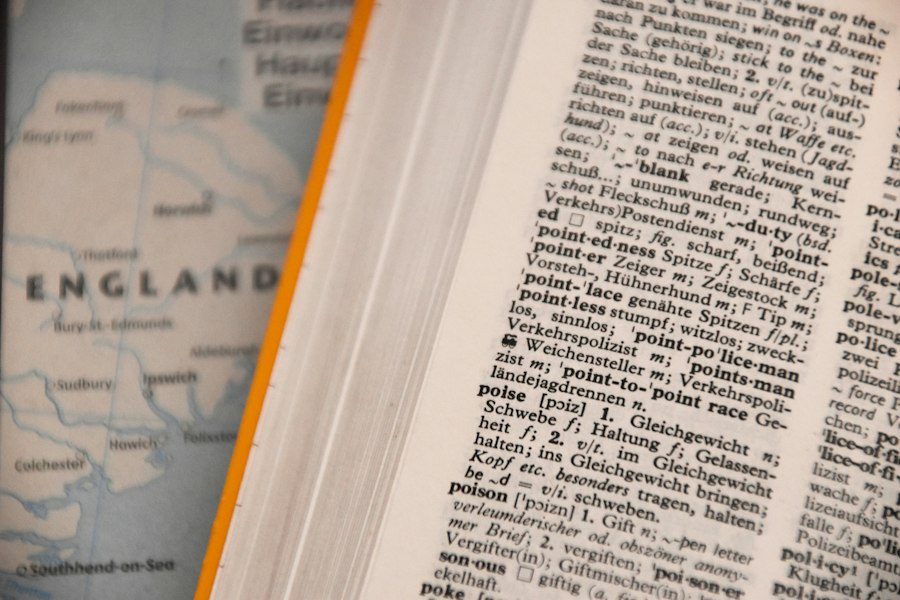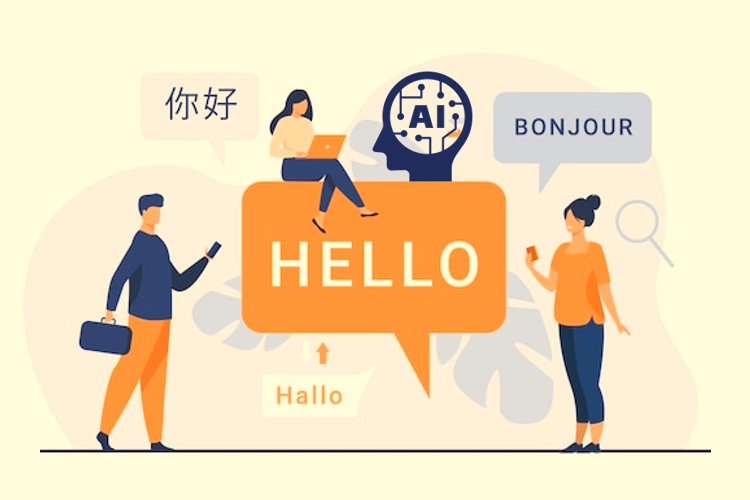Introduction
In today’s globalized world, the need for accurate and culturally sensitive translation services has never been greater. As businesses expand across borders and individuals seek to connect with people from diverse linguistic backgrounds, the demand for translation companies that can deliver exceptional quality and reliability continues to soar. In this blog, we’ll explore the top translation companies that stand out as the industry leaders, setting the benchmark for excellence in language services.
1. SDL
SDL is a powerhouse in the translation industry, offering a comprehensive suite of language solutions tailored to the needs of global businesses. With a global presence and a client base spanning various sectors, SDL has earned a reputation for its cutting-edge technology, linguistic expertise, and unwavering commitment to quality. From translation management to language technology and content creation, SDL’s solutions empower clients to communicate effectively across languages and cultures, driving success in the global marketplace.
2. Lionbridge
Lionbridge is renowned for its innovative approach to translation and localization, leveraging a blend of human expertise and technology to deliver tailored solutions to clients around the world. Specializing in localization, global marketing, and AI data services, Lionbridge helps clients navigate the complexities of multilingual communication with precision and efficiency. By harnessing the power of AI-driven tools and data-driven insights, Lionbridge enables clients to connect with audiences in diverse markets, driving engagement and growth on a global scale.
3. TransPerfect
TransPerfect is a behemoth in the translation industry, offering a vast array of language services to clients across industries. With a global network of linguists and advanced technology solutions, TransPerfect delivers unparalleled quality and efficiency in every translation project. From legal and healthcare to e-commerce and finance, TransPerfect’s expertise spans a wide range of sectors, ensuring that clients receive accurate and culturally relevant translations that resonate with their target audiences.
4. One Hour Translation
As its name suggests, One Hour Translation specializes in rapid translation services, offering quick turnaround times without compromising on quality. With a user-friendly platform and a global network of translators, One Hour Translation enables clients to access fast and reliable translations for their urgent needs. Whether it’s business documents, website content, or marketing materials, One Hour Translation delivers translations with speed and precision, helping clients meet tight deadlines and seize opportunities in the global marketplace.
LanguageLine Solutions is a leader in interpretation and translation services, providing on-demand language solutions to clients across industries. With a focus on linguistic accuracy and cultural competency, LanguageLine Solutions helps clients bridge language gaps and communicate effectively in diverse settings. Whether it’s healthcare, government, or finance, LanguageLine Solutions offers interpretation and translation services in over 240 languages, enabling clients to serve their multicultural audiences with confidence and clarity.
6. Gengo

Gengo is a leading translation platform that combines human expertise with advanced technology to deliver high-quality translations at scale. With a global network of skilled translators and an intuitive online platform, Gengo offers a wide range of language services, including translation, localization, and transcription. Whether it’s translating product descriptions for e-commerce websites or localizing marketing campaigns for global brands, Gengo provides fast, affordable, and accurate translations tailored to clients’ specific needs.
7. Smartling
Smartling is a cloud-based translation management platform that helps companies streamline their localization processes and deliver multilingual content efficiently. With features such as translation memory, glossary management, and workflow automation, Smartling empowers clients to manage translation projects seamlessly and maintain consistency across languages and channels. From website localization to mobile app translation, Smartling offers a comprehensive solution for companies looking to expand their global reach and engage with international audiences.
Memsource is a leading translation management system that offers a range of tools and features to streamline the translation process and improve efficiency. With cloud-based technology and integrations with other translation tools and platforms, Memsource enables translators and project managers to collaborate seamlessly and deliver high-quality translations on time and within budget. Whether it’s managing translation projects, tracking progress, or analyzing linguistic data, Memsource provides the tools and insights needed to optimize the translation workflow and drive success in global markets.
9. Wordbee
Wordbee is a comprehensive translation management platform that offers a suite of tools and features to support the entire translation lifecycle. From project management and collaboration to translation memory and terminology management, Wordbee provides everything translators and localization professionals need to streamline their workflows and deliver accurate and consistent translations. With integrations with other translation tools and platforms, Wordbee enables seamless collaboration and interoperability, helping companies maximize efficiency and productivity in their translation processes.
10. Matecat
Matecat is an innovative translation tool that leverages machine learning and artificial intelligence to enhance the translation process and improve accuracy and efficiency. With features such as interactive translation memory, real-time collaboration, and automated quality checks, Matecat enables translators to work more effectively and deliver high-quality translations in less time. Whether it’s translating documents, websites, or multimedia content, Matecat offers a user-friendly and intuitive platform that empowers translators to achieve exceptional results and exceed client expectations.
Conclusion: Excellence in Translation

In the dynamic world of translation, these top companies stand out as beacons of excellence, setting the standard for quality, reliability, and innovation. From SDL’s comprehensive language solutions to Lionbridge’s cutting-edge localization services, these companies empower clients to overcome language barriers and connect with audiences around the world. As businesses continue to expand globally and communication becomes increasingly multilingual, the role of top translation companies will only continue to grow in importance, helping clients navigate the complexities of the global marketplace with confidence and success.
Translate written words
You can use the Google Translate app to translate written words or phrases. You can also use Google Translate in a web browser like Chrome or Firefox. Learn more about Google Translate in a web browser.
Important: To translate in Chrome on your mobile device, you need Javascript. Learn how to turn on Javascript.
Translate text
- On your computer, open Google Translate.
- At the top of the screen, select the languages to translate.
- From: Choose a language or select Detect language
.
- To: Select the language that you want the translation in.
- From: Choose a language or select Detect language
- In the text box on the left, enter the text you want to translate.
- Choose what you want to do:
- Look up details: To check available details for each result, such as definitions, examples, or other translations, click Look up details.This is currently available only for selected languages.
- Listen: To hear the translation, click Listen
. To change the audio speed, click Settings
at the top right and select Normal, Slow, or Slower.
- Copy: To copy the translation to the clipboard, click Copy translation
.
- Rate or edit: Suggested edits can help improve translations. To rate a translation or suggest an edit, click Thumbs up or Thumbs down
.
- Share: To send the translation through email or Twitter, click Share translation
.
Important: Some words may have different meanings. To help the translation capture your intended meaning, write your word in a phrase or sentence.

Translate longer text
You can translate up to 5,000 characters at a time when you copy and paste your text.
- On your computer, open Google Translate.
- At the top of the screen, choose the language that you want to translate to and from.
- From: Choose a language or select Detect language.
- To: Select the language that you want the translation in.
- Copy and paste your text into the text box.
- You can review sections of translated text. At the bottom bar, click Back
or Forward
.
The language services and technology industry includes over 18,000 players worldwide, ranging from small translation agencies to global content behemoths.
This diverse group of language service providers (LSPs) and translation technology vendors adds up to an industry with an estimated value of $67.2B in 2022 and is expected to grow by 6.2% to $98B by 2028.
This brief article offers one method of analysing the complex language industry by listing the world’s largest language service providers (LSPs) by revenue.
What is the Language Industry?
Before we rank the top companies in the language industry by revenue, we need to note that this kind of analysis isn’t a precise science. The language industry is constantly changing, and you should view any ranking as a brief snapshot.
For starters, what is the language industry?
The European Union’s Language Industry Platform (LIND) defines the language industry as “professionals working in translation, interpreting, subtitling and dubbing, localisation, language technology tools development, international conference organisation, language teaching, and linguistic consultancy.”
But this definition still leaves a lot of room for interpretation. As language services and technologies evolve, the boundaries between the industries become blurred.
For example, AI tools like Google Translate, Grammarly and most recently ChatGPT, are perhaps some of the most frequented and better-known translation and proofreading applications in the world. However, none of these companies are active players in the language services industry.
The World’s Top Translation Companies According to Slator
So, how do we make sense of it all?
One group that works to provide us with industry insights is Slator, a leading purveyor of news, analysis, and research for the language industry. Like the Fortune 500 approach, Slator ranks the world’s largest language service providers by revenue in their annual report, The Slator Language Service Provider Index (LSPI).
Slator is a highly respected source of business insights into the translation & technology companies that make up the large, complex, and ever-changing language service industry.
As such they have recognised the need to highlight a greater diversity within the industry both in terms of the size of a provider, from boutique to super-provider, as well as the range of services they can provide. Their 2023 Language Service Provider Index reflects this with four new categorisations that segment the industry by revenue.
They are, as defined by Slator themselves:
- Super Agencies – full-service, standalone LSPs with revenues greater than USD 200m;
- Leaders – LSPs with revenues greater than USD 25m and that do not fall into the Super Agency category;
- Challengers – LSPs with revenues between USD 8m and USD 25m;
- Boutiques – LSPs with revenues between USD 1m and USD 8m.
LanguageWire and Slator’s 2023 Language Service Provider Index
In Slator’s 2023 Language Service Provider Index, LanguageWire ranks 26th out of 350 of the world’s top providers with the segmentation of Leader.
We achieved this position in part thanks to a constant focus on innovation and our dedication to customer success. Recent advances in AI & machine learning, together with our dedicated teams of experts, have made it possible to carve out additional growth in a crowded and highly competitive industry.
However, it’s crucial to note that bigger is not always better and the new segmentation reflects this. Sometimes smaller specialists can serve niche multilingual content needs best, while not all LSPs can boast the same level of data security and quality standards.
LanguageWire always strives to find the perfect balance for our customers without compromising on the highest levels of quality.
Translation is the communication of the meaning of a source-language text by means of an equivalent target-language text.The English language draws a terminological distinction (which does not exist in every language) between translating (a written text) and interpreting (oral or signed communication between users of different languages); under this distinction, translation can begin only after the appearance of writing within a language community.
A translator always risks inadvertently introducing source-language words, grammar, or syntax into the target-language rendering. On the other hand, such “spill-overs” have sometimes imported useful source-language calques and loanwords that have enriched target languages. Translators, including early translators of sacred texts, have helped shape the very languages into which they have translated.
Because of the laboriousness of the translation process, since the 1940s efforts have been made, with varying degrees of success, to automate translation or to mechanically aid the human translator.More recently, the rise of the Internet has fostered a world-wide market for translation services and has facilitated “language localisation”.

